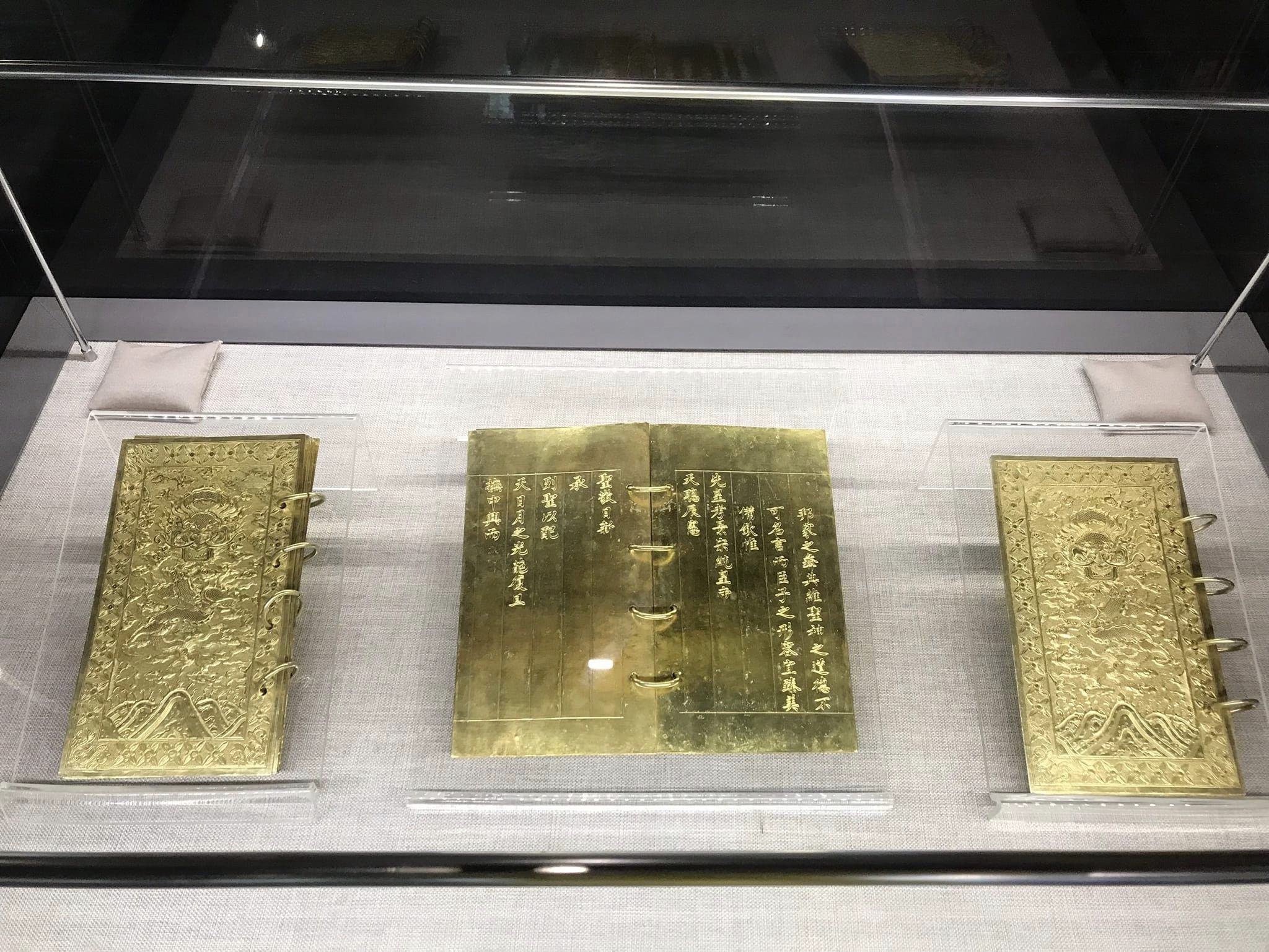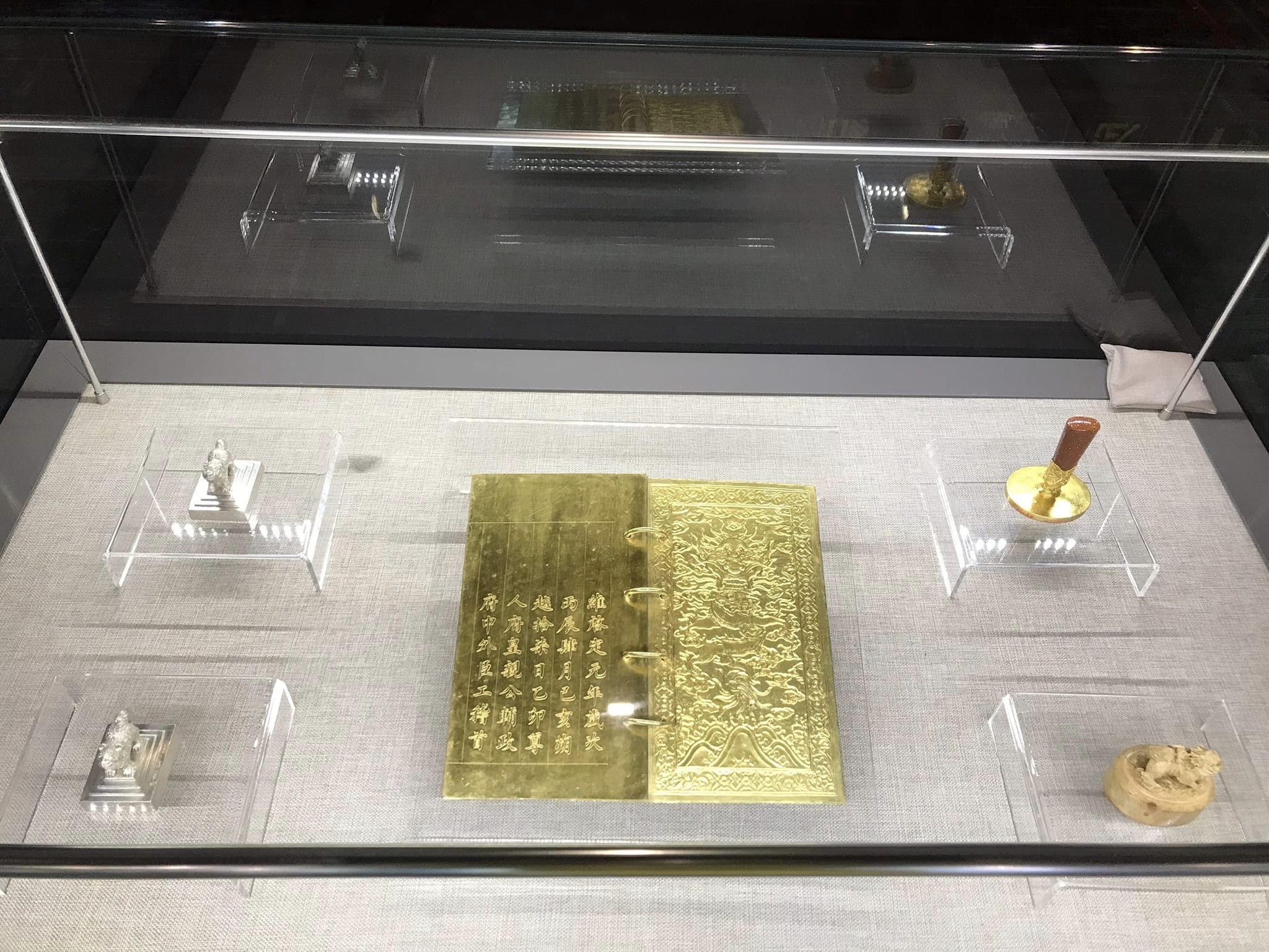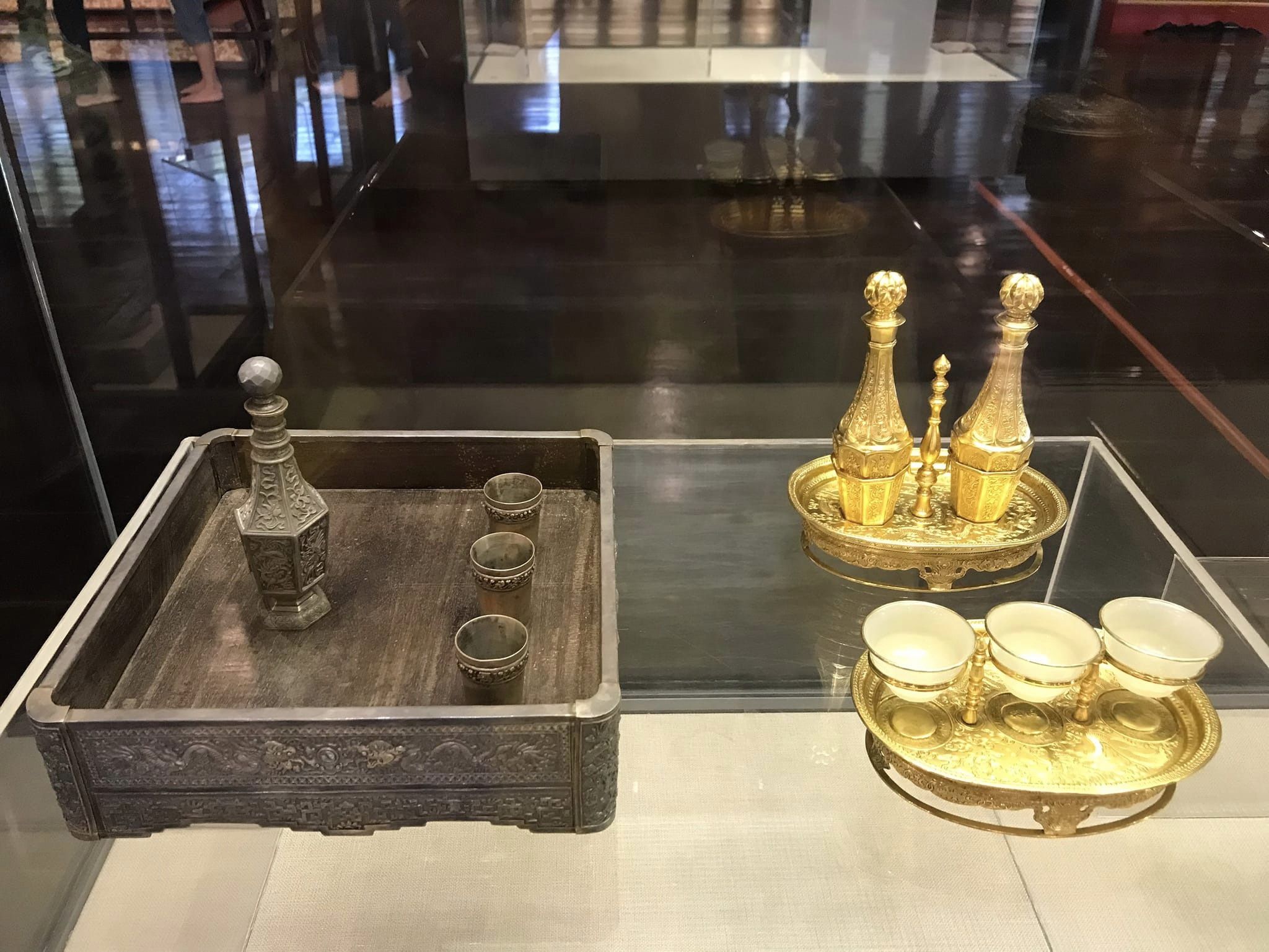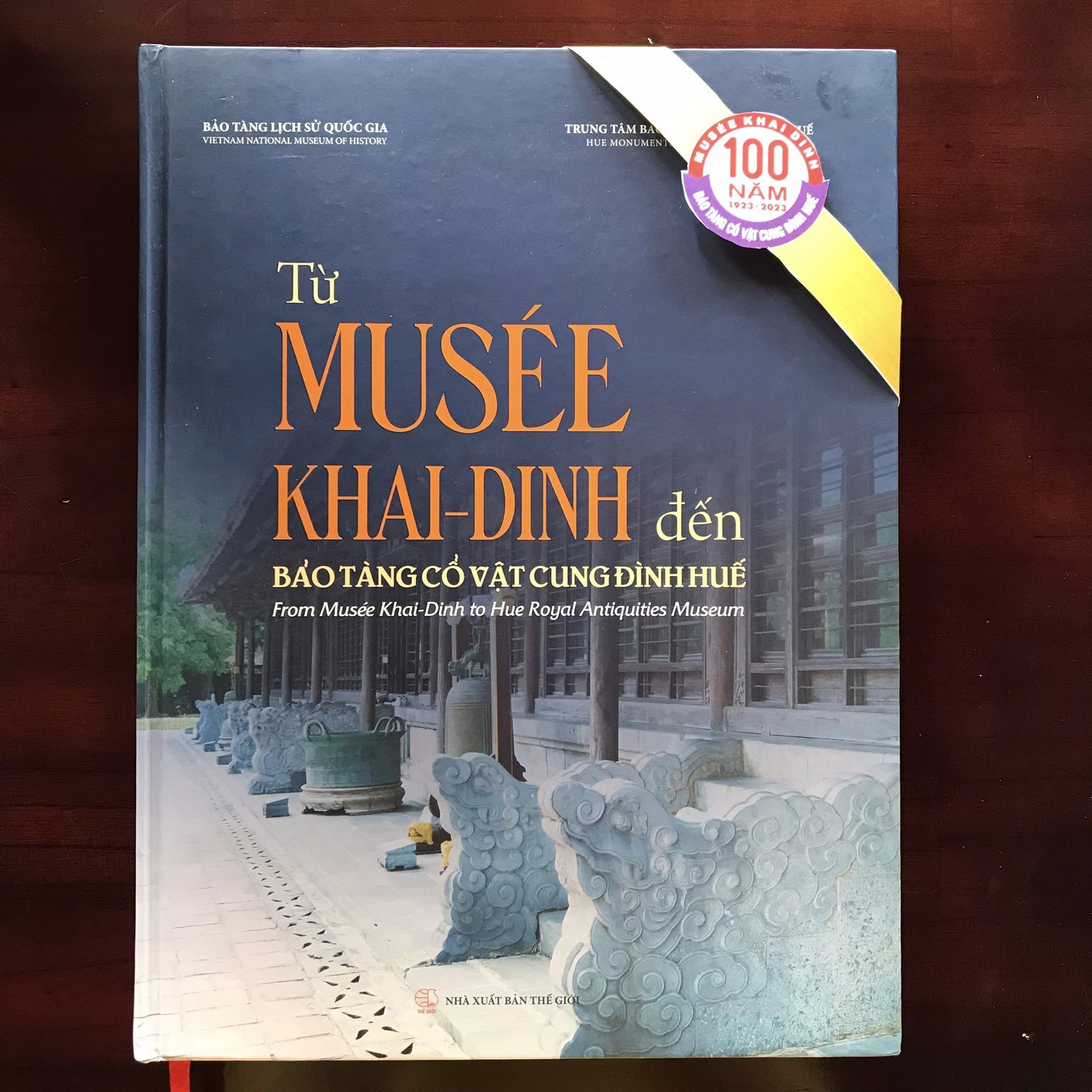With the perspective and vision of the Emperor of Dai Nam regarding the preservation of the cultural heritage, on August 24, 1923, a decree was issued to establish the Musée Khai Dinh based on the emperor's approval: "Artistic products represent the characteristics of a nation... They reflect that nation's social life, political ceremonies, and spirit. I approve and decree the establishment of the Musée Khai Dinh."
Among the collection of artifacts related to the 12th emperor of the Nguyen dynasty held at the Hue Royal Antiquities Museum and the National History Museum, there will be a selection of 100 outstanding artifacts introduced to the public on this special occasion. These artifacts feature diverse materials (gold, silver, gemstones, ivory, porcelain, wood, paper, fabric, etc.) and a variety of types and functions (symbolic treasures of royal power - seals, swords, thrones, imperial edicts; ancestral worship items - shrines, altars, insignia; interior decorations - vases, stools, porcelain containers; daily use items - wine vessels, cups, spoons, medicine boxes, sugar tongs, shoes, clothing; and even artifacts related to formal ceremonial practices of the dynasty).

These artifacts were predominantly crafted domestically (in the imperial workshops) to serve the king, royalty, and the royal court. Some were commissioned from foreign countries (mainly China, France, and England) with inscriptions and lacquer detailing...
Notable among them are the emblematic treasures of royal authority - the golden seals and imperial seals. According to Dr. Pham Quoc Quan, a member of the National Cultural Heritage Council, during his 10-year reign (1916 - 1925), Emperor Khai Dinh possessed 12 seals and imperial seals. Among these, four items stand out: "Khải Định thần hàn" (Emperor Khai Định's Seal) to address domestic issues, "Khải Định Đại Nam hoàng đế" (Emperor Khai Định of Great Nam) for foreign relations, each with distinct changes in form, structure, material, etc., compared to seals from previous reigns...
"The seals are still cast in gold, with a flattened oval shape, and a saffron stone is placed on top of the seal. The lower part is also cast in gold, with two branches of chrysanthemum flowers in raised relief. A French inscription surrounds the seal's face: 'KHAI-DINH - EMPEREUR D’ANNAM,' with a central depiction of a dragon - the symbol of royal authority of the Dai Nam nation, adorned with traditional engravings that are preserved as everlasting treasures.
The two imperial seals are named 'Khải Định hoàng đế chi tỷ' (Seal of Emperor Khải Định) and 'Khải Định hoàng đế ngọc tỷ'. These were made using precious gemstones in a traditional pattern, symbolizing the monarch's supreme authority. The 'Hoằng Tông Tuyên hoàng đế chi bảo' (Imperial Decree of Emperor Hoằng Tông) seal is cast in silver coated with gold.
A significant symbol of royal power and Emperor Khải Định's treasures includes the 'An dân bảo kiếm' (Sword of Peace and Protection). According to Dr. Phạm Quốc Quân, this artifact, uniquely crafted from gold, mother-of-pearl, glass, iron, and other materials, bears distinctive marks of Emperor Khải Định. It is the sole surviving example in Vietnamese royal history, representing the emperor's skillful use of materials, such as gilded wood and intricate motifs, like the sun, bat clutching the character 'Thọ,' dragon clutching a gem, swirls forming the character 'Vạn,' and auspicious motifs like the eight treasures and citron flowers. These elements exhibit traditional artistic values, conveying the everlasting nature of imperial power and showcasing the craftsmanship of artisans proficient in gilded wood carving and lacquerwork.
Additionally, the exhibition features three gold seals belonging to the empress dowager and a gold seal belonging to the empress consort. In accordance with Nguyen Dynasty protocol, empress dowagers, empresses, and concubines held special titles, emphasizing their roles and expressing reverence towards them through rituals of enthronement, promotion, and bestowing titles. The types of seals, whether made of gold or silver coated with gold, were determined by rank and title. These four seals provide insight into the positions of these royal women, whom Emperor Khải Định honored.

Emperor Khải Định's book seals, eight of which remain today, are rectangular in shape, made of silver coated with gold, and fastened with four round studs. They are adorned with raised dragons, clouds on waves, and decorative corner motifs of citron flowers and leaves. The content of these book seals extols Emperor Khải Định's ascension to the throne, praises his mother, lauds his virtues, and offers reverence to his father, Emperor Đồng Khánh. Two book seals stand out for their unique design, featuring a four-petaled citron flower in a quincunx arrangement, denoting a book seal for Prince Nguyễn Phúc Vĩnh Thụy (1922) and one for the Regency Council, led by prince Tôn Nhân, and the civil and military officials presented a golden seal to Emperor Bảo Đại, proclaiming him emperor.
The collection extends to include religious objects, household items, and interior decorations, all crafted from precious materials (gold, silver, and gemstones) and adorned with inscriptions of different eras (Khải Định, Khải Định Nguyên Niên, etc.) and traditional motifs (five-clawed dragons, guardian lions). A notable example is the long pedestal, designed in a French style but featuring traditional motifs (dragons, guardian lions). The piece exemplifies the melding of Eastern and Western influences, expressing a sense of Vietnamese national spirit through gilded wood carving while adopting Western techniques.

Objects like gold and gemstone trays, vases, spoons, sugar tongs, and silver boxes showcase the opulent style of Emperor Khải Định's era, characterized by valuable materials such as silver and gold. The soft lines of square and cylindrical forms, along with traditional motifs and decorative elements like dragons, lions, and clouds, reflect the East-meets-West style that Emperor Khải Định embraced. These objects epitomize the taste of an early 20th-century Vietnamese monarch.
Furthermore, the collection includes a rectangular silver box adorned with raised dragons on the lid, along with sun and cloud motifs. This box served as a cardholder for playing cards and was created in Emperor Khải Định's second year (1917). Notably, the name of the craftsman, Nguyễn Văn Hòe, is inscribed on the bottom of the box, along with the dynasty and year of manufacture, making this a unique piece in royal craftsmanship.

The purpose of this exhibition is to pay homage to Emperor Khải Định's contributions to establishing the Musée Khai Dinh - Hue Royal Antiquities Museum and to honor the collective efforts of generations in preserving and promoting the cultural heritage of the Nguyen Dynasty. Moreover, through this exhibit, conservationists aim to provide the public with a more objective understanding of the 12th emperor of the last imperial dynasty in Vietnamese history, showcasing his significant roles, visionary thinking, and conservation efforts in safeguarding the nation's heritage."